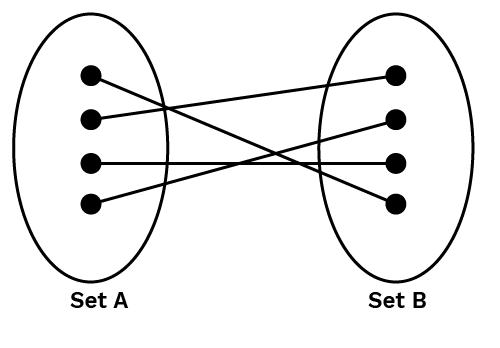Maths Notes for Chapter 1 Relations and Functions Class 12 - FREE PDF Download



FAQs on Relations and Functions Class 12 Maths Chapter 1 CBSE Notes - 2025-26
1. What are the core concepts summarized in Class 12 Relations and Functions revision notes?
The Relations and Functions Class 12 Notes present a concise overview of key topics such as relations, types of relations (reflexive, symmetric, transitive), functions, domain, range, types of functions (one-one, onto, bijective), binary operations, and function properties. These summaries enable quick revision before exams and ensure understanding of fundamental concepts.
2. How should students structure their revision for Relations and Functions based on these notes?
It’s effective to start with the definitions and key terms (relations, functions, domain, range), then move on to the types and properties of relations and functions. Reviewing solved examples and properties helps build connections. End each session by summarizing concepts in your own words, which reinforces understanding and aids long-term retention.
3. How do the revision notes clarify confusing concepts in Relations and Functions?
These notes use simple language and step-by-step explanations for each topic, breaking down complex ideas. Diagrams, examples, and practice problems are provided where needed, especially for challenging concepts like equivalence relations or binary operations. This approach reduces confusion and helps students grasp the logical flow of the chapter.
4. What important connections exist between relations and functions in the Class 12 syllabus?
Relations describe the association between elements of two sets, while functions are a special case where each input has a unique output. Understanding how domains, codomains, and ranges interact is crucial for solving mapping and function-based problems, as emphasized in the revision notes.
5. What is the significance of practicing with the problems included in the revision notes?
Solving practice problems consolidates conceptual understanding and improves problem-solving skills. Frequent practice enables students to recognize patterns, apply properties of relations and functions, and recall formulas more quickly during the exam. The notes are designed to target areas where students typically make errors, boosting accuracy and confidence.
6. How should students approach learning the differences between types of relations and functions using revision notes?
The notes highlight distinct features of each type—for example, reflexivity, symmetry, and transitivity in relations, and one-one, onto, and bijective in functions. Comparing definitions side-by-side and working through provided examples clarifies these distinctions, making it easier to answer exam questions that focus on classification or justification of different types.
7. Which summary techniques from the revision notes help in last-minute revision for the Relations and Functions chapter?
Effective techniques include making a concept map to link key ideas, listing all formulas and properties at a glance, and practicing with summary tables provided in the notes. These methods enable a rapid, organized review of essential points just before the exam, reducing stress and increasing retention.
8. Why is understanding the domain and range fundamental while revising functions?
Domain and range determine what inputs are allowed and what outputs are possible in a function. Misunderstanding these can lead to incorrect mappings or incomplete answers. The revision notes emphasize practicing how to identify domain and range for different functions, which is a common focus in both short and long-answer exam questions.
9. How do revision notes for Chapter 1 ensure syllabus alignment for CBSE 2025–26 exams?
These notes strictly follow the latest CBSE Class 12 Maths syllabus and include all mandatory topics such as types of relations, functions, and binary operations. Any topics removed or updated in the current syllabus are not covered, allowing students to focus efficiently and prevent unnecessary study.
10. In what ways can the revision notes be used to overcome common misconceptions in Relations and Functions?
The notes specifically address typical misconceptions, such as confusing one-one functions with onto functions or misclassifying a relation as reflexive or symmetric. By providing clear definitions, visual aids, and corrected examples, the notes help students identify and rectify these misunderstandings before attempting exam questions.
11. What role do summary points at the end of each topic play in the revision notes?
Summary points consolidate the main ideas, important formulas, and key properties, making it easy to quickly refresh memory. These points serve as an effective alternative to rereading the entire section and are especially helpful for last-minute reviews and quick recaps before attempting practice papers or board exams.
12. How can students maximize their exam preparation using the Class 12 Relations and Functions revision notes?
Students should use the notes to prioritize core concepts, regularly test themselves on summary questions, clarify each topic before moving on, and integrate revision notes with other study resources. Engaging in active recall and spaced repetition as encouraged by the notes' structure will ensure deeper understanding and long-term retention ahead of the exams.






































